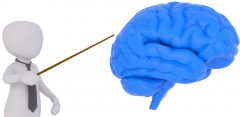
In one of my most popular posts So, what is AI really? I showed that Artificial Intelligence (AI) basically boils down to autonomously learned rules, i.e. conditional statements or simply, conditionals.
In this post, I create the simplest possible classifier, called ZeroR, to show that even this classifier can achieve surprisingly high values for accuracy (i.e. the ratio of correctly predicted instances)… and why this is not necessarily a good thing, so read on!
Continue reading “ZeroR: The Simplest Possible Classifier, or Why High Accuracy can be Misleading”



